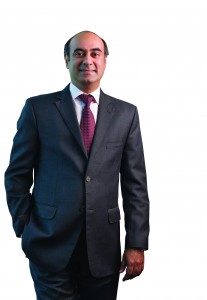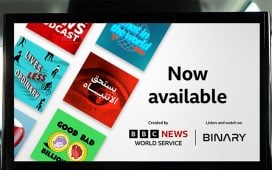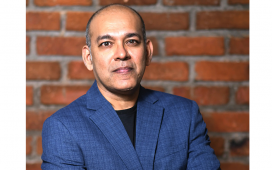OSN’s CMO Hamad Malik points to the untapped potential in Saudi Arabia and Egypt for the Pay TV platform, while underlining the role of data in shaping the product and customer experience.
What are the challenges for OSN, and the category of Pay TV?
If you look at any of the other industries, like say automobiles or FMCG, the challenge for a premium brand would be to command a premium of (say) 10 or 20 per cent over the competition. Here we compete against a pro-duct that is completely free. Effectively, the competition is one that offers something that is perceived to be similar, for free.
In the category of Pay TV, the product proposition itself is not very clear in the minds of consumers. When people are not familiar with what OSN or Pay TV is and what the USPs are, the challenge is about educating them, on why they should explore Pay TV. How do we communicate why people need to come on to the Pay TV platform?
On the other hand, we also need to ensure that we are staying at the same pace with which consumer preference is evolving; that we are staying in touch with consumer needs.
Piracy is a huge challenge; that should be on top of the list. There are different types of piracy – there is spillover content, there is redistribution piracy. We are coordinating with government agencies on that front.
In this context, how would you define the role of marketing?
It’s an environment where you need to drive sales, by driving recognition, ensuring awareness, creating intent, enabling an understanding of the differentiation, and the functional aspects of the product. Beyond that, we have to build an emotional connect as well.
Aspects like corporate so-cial responsibility initiatives help build that connect. Last year, we did our first CSR campaign focused on health and wellbeing. In the last 12 months, we have done some focused activities on air and on ground for the same. We have also been tracking the results. Besides getting us regional and international recognition, it has made a difference with various people adopting a healthier lifestyle as a result of the campaign. Next year, we plan to measure the impact externally as well. We’d like to do more and more of things like these.
We like to listen to customers and figure what is of relevance to them. Consumer insights are captured using analytical tools. Analysing usage behaviour and attitude help us understand them better, talk to them better. It helps us understand what their needs are, and position products better.
How does the data analytics / feedback mechanism work for OSN?
We track the viewership patterns. Using a third party research company, this is done on a quarterly basis at one level. It helps us understand what they are watching, and who is watching what.
With OSN Play (online streaming), we get very good user data. Similarly with OSN GO (pay per view online), you get a very good handle on what people prefer to consume, as it is consumed.
And how is this data put to work?
Marketing in the space of Pay TV has to focus on individuals, when it focuses on the audience. For us, each subscriber is important. Which is why we have initiated the first CRM programme for the Pay TV industry, the OSN Privileges loyalty programme. It was launched two and a half years ago. While it is a reward programme for subscribers, it is also a very rich source of data.
At one level is the partner rewards. Then you have the contests with prizes like iPhones and such. Then you have the ‘Money can’t buy’ experiences, which reward subscribers with experiences close to what the brand claims. For a movie buff, what could be more exciting than a trip to the Oscars? Or for a WWE fan, a trip to an event in the UK or the US? Those are experiences that money cannot buy.
Whatever the prize, as people participate in the competitions, they also share information on usage of the platform.
Besides all of this, there is also the third party measure of customer satisfaction, which provides the NPS for us to act on.
Would it be right to say the data’s key role would be to feed back into the product?
For a Pay TV service provider, the bread and butter is selling TV content. For us, this is the product. And we have to be damn good at it, because this is the reason for our being. So yes, the data is key in shaping the product offering.
We have also invested significantly in customer service. We have invested in training at call centres in Egypt, Kingdom of Saudi Arabia and UAE, as also technology like auto-dialers and software to create a better experience for customers. Now, we’re deploying advanced analytics to get further insights.
Isn’t all of this becoming hygiene across service providers?
Data and technology are hygiene today. But it is the level of depth you can get in that is the differentiator.
What have you observed in terms of consumer adoption of the product, where as you say free options exist?
Adoption is growing but we have to understand that it is habitual. When you have over 700 free-to-air (FTA) channels, if you are not a discerning TV viewer, you will find something to watch.
What we have been trying to achieve, is creating awareness on quality, the exclusive programming and the viewing experience, on the Pay TV platform. The element of quality is multi-dimensional. The number of HD screens is increasing in the region. Among FTA channels, there are not more than eight to 10 that would offer HD content. One dimension of quality is True HD content. Then you have features like recording, EPG (Elec-tronic Programming Guide), the latest movie premieres and so on.
We have diverse audiences here and TV plays a different role for each of them. We have a large Asian audience; TV for them provides a window to the rest of the world and allows them to stay connected with their cultures. It allows them to stay in touch with what’s happening back home, provides access to education, access to sports that is of interest to them. Pehla (for South Asia) and Pinoy (Philippines) provides those segments access to their own content.
Across the board, we want to be a high quality offering with customers in mind, not advertisers in mind.
Who would you say is the biggest audience for OSN now?
OSN has a very diverse product and we are seeing growth in all segments. In the case of western expats, they are familiar with what Pay TV is and they subscribe when they land here. It’s a smaller group and the penetration is quite high.
The biggest TG that exists is the Saudi Arabian, Egyptian and UAE nationals. Those would be the key growth markets. Both in Saudi Arabia and Egypt, there is very high potential and low penetration. Relatively, UAE is well penetrated.
I see huge potential in Saudi Arabia. The population in Saudi is much higher, and it is a market that has purchasing power, but it is not very well penetrated. In Egypt, which again has a large population, the penetration of Pay TV is nascent.
In the UAE, specifically, are you seeing faster growth with offerings like GO? How close are we to saturation for the basic Pay TV product?
There are 100 million TV households in the region. Pay TV penetration is at just 11 per cent. Pay TV as a product is getting popular, but we are far from saturation, even in the UAE. As a product, we are at a premium and we are adopted first by households with a certain level of income. Even within this premium segment, my estimate is that we have not even reached a substantial share. There is scope for further growth.
If we continue to make sense of the proposition and focus on our USPs, and drive awareness of the differentiation from FTA, we will continue to grow.
How does the average revenue per user (ARPU) here compare with the rest of the world?
It’s quite healthy in this part of the world. We are pursuing a premium segment. It’s comparable to. the ARPUs in advanced markets. And the premium ARPUs also reflect in the premium product proposition we have.
(This article appears in the issue of Campaign Middle East dated 25 January 2015.)










